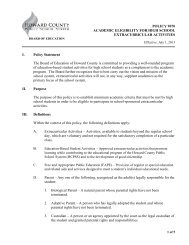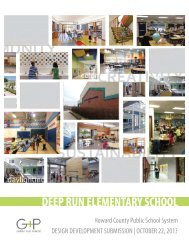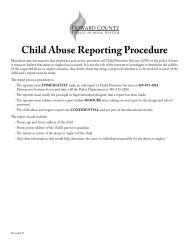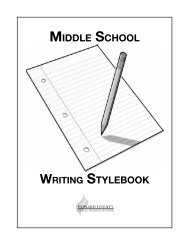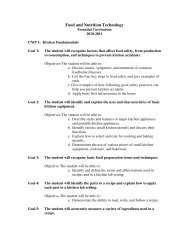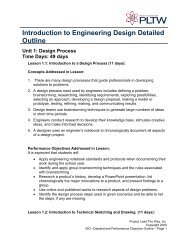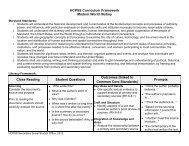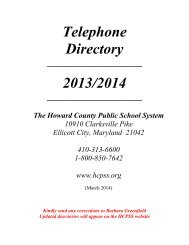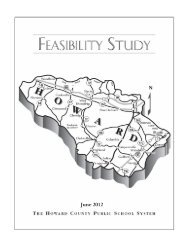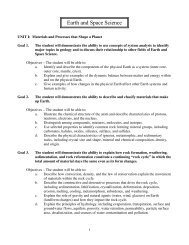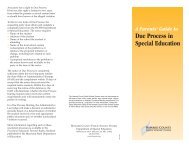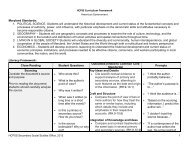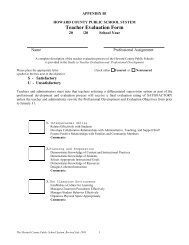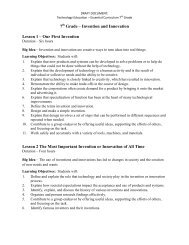Pre-Algebra GT - Howard County Public Schools
Pre-Algebra GT - Howard County Public Schools
Pre-Algebra GT - Howard County Public Schools
Create successful ePaper yourself
Turn your PDF publications into a flip-book with our unique Google optimized e-Paper software.
2. Compare properties of two functions each represented in a different way (algebraically,<br />
graphically, numerically in tables, or by verbal descriptions). For example, given a<br />
linear function represented by a table of values and a linear function represented by an<br />
algebraic expression, determine which function has the greater rate of change.<br />
3. Interpret the equation y = mx + b as defining a linear function, whose graph is a straight<br />
line; give examples of functions that are not linear. For example, the function A = s 2<br />
giving the area of a square as a function of its side length is not linear because its graph<br />
contains points (1, 1), (2, 4), and (3, 9), which are not on a straight line.<br />
Use functions to model relationships between quantities.<br />
4. Construct a function to model a linear relationship between two quantities. Determine<br />
the rate of change and initial value of the function from a description of a relationship or<br />
from two (x, y) values, including reading these from a table or from a graph. Interpret the<br />
rate of change and initial value of a linear function in terms of the situation it models, and<br />
in terms of its graph or a table of values.<br />
5. Describe qualitatively the functional relationship between two quantities by analyzing a<br />
graph (e.g., where the function is increasing or decreasing, linear or nonlinear). Sketch a<br />
graph that exhibits the qualitative features of a function that has been described verbally.<br />
Geometry 8.G<br />
Note: There needs to be an emphasis on using appropriate mathematical vocabulary.<br />
Students will need to begin to develop arguments and justifications.<br />
Understand congruence and similarity using physical models, transparencies, or geometry<br />
software.<br />
1. Verify experimentally the properties of rotations, reflections, and translations:<br />
a. Lines are taken to lines, and line segments to line segments of the same length.<br />
b. Angles are taken to angles of the same measure.<br />
c. Parallel lines are taken to parallel lines.<br />
2. Understand that a two-dimensional figure is congruent to another if the second can be<br />
obtained from the first by a sequence of rotations, reflections, and translations; given two<br />
congruent figures, describe a sequence that exhibits the congruence between them.<br />
3. Describe the effect of dilations, translations, rotations, and reflections on twodimensional<br />
figures using coordinates.<br />
4. Understand that a two-dimensional figure is similar to another if the second can be<br />
obtained from the first by a sequence of rotations, reflections, translations, and dilations;<br />
<strong>Howard</strong> <strong>County</strong> <strong>Public</strong> <strong>Schools</strong>, Office of Secondary Mathematics, March 2012



